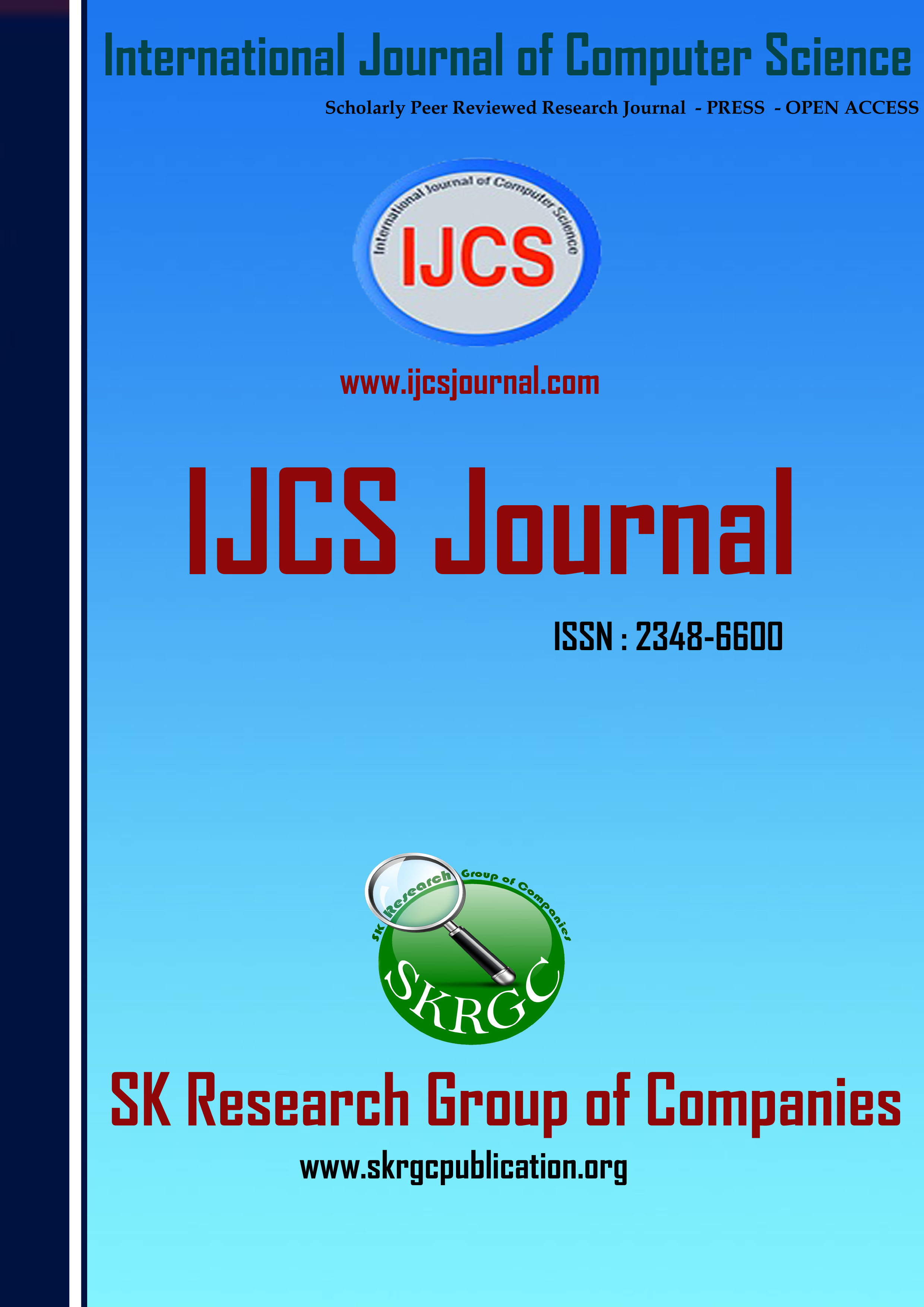QOS-AWARE ROUTING FOR IMPROVING PERFORMANCE IN COGNITIVE RADIO WIRELESS SENSOR NETWORKS
International Journal of Computer Science (IJCS) Published by SK Research Group of Companies (SKRGC)
Download this PDF format
Abstract
The Industrial Cognitive Radio wireless Sensor Network (ICRSN’s) is one of the candidate areas wherever cognitive techniques are often used for opportunist spectrum access. In the cognitive radio sensor networks, the throughput and end-to-end delay is an important consideration. To perform high performance new technology has been introduced, known as QoS-aware clustering (QAC) for cognitive radio sensor networks. QoS (Quality of Service) is the idea that communication rates, lapse rates, and other characteristics can be measured and, improved. So, based on the four factors such as throughput, delay, energy, Packet delivery ratio the path is to be selected and the data can be forwarded through the ultimate optimal path. An experimental result shows that the system achieves less delay, high Packet delivery ratio.
References
[1]I. F. Akyildiz, W.-Y. Lee, M. C. Vuran, and S. Mohanty, “Next generation/ dynamic spectrum access/cognitive radio wireless networks: A survey,” Comput. Netw., vol. 50, pp. 2127–2159, 2006.
[2]O. Akan, O. Karli, and O. Ergul, “Cognitive radio device networks,” IEEE Network, vol. 23, no. 4, pp. 34–40, Jul.–Aug. 2009
[3] S. Haykin, “Cognitive radio: Brain-empowered wireless communications,” IEEE J. Sel. Areas Commun., vol. 23, no. 2, pp. 201–220, Feb. 2005
[4] W. Heinzelman, A. Chandrakasan, and H. Balakrishnan, “An application- specific protocol design for wireless microsensor networks,” IEEE Trans. Wireless Commun., vol. 1, no. 4, pp. 660–670, Oct. 2002
[5] W. Heinzelman, A. Chandrakasan, and H. Balakrishnan, “Energy-efficient communication protocol for wireless microsensor networks,” in Proc. 33rd Annu. Hawaii Int. Conf. Syst. Sci., Jan. 2000, pp. 3005–3014
[6] Z. Liang, S. Feng, D. Zhao, and X. Shen, “Delay performance analysis for supporting period traffic during a psychological feature radio device network,” IEEE Trans. Wireless Commun., vol. 10, no. 1, pp. 325–335, Jan. 2011
[7] M. Oto and O. Akan, “Energy-efficient packet size optimisation for psychological feature radio device networks,” IEEE Trans. Wireless Commun., vol. 11, no. 4, pp. 1544–1553, Apr. 2012.
[8] Pham Tran Anh Quang and Dong-Seong Kim, “Throughput-Aware Routing for Industrial device Networks: Application to ISA100.11a IEEE Trans. INDUSTRIAL scientific discipline, vol. 10, no. 1, Feb. 2014
[9]K. Sohrabi and G. Pottie, “Performance of a completely unique organisation protocol for wireless impromptu device networks,” in Proc. IEEE VTC Fall, 1999, vol. 2, pp. 1222–1226.
[10]A.Woo, T. Tong, and D. Culler, “Taming the underlying challenges of reliable multihop routing in device networks,” in Proc. ACM SenSys, 2003, pp. 14–27
[11]T. Wu and S. Biswas, “Minimizing inter-cluster interference by selfreorganizing raincoat allocation in device networks,”Wireless Netw., vol. 13, pp. 691–703, Oct. 2007.
[12]Wang H., Gao Z., Guo Y., Huang Y. A Survey of Range-Based Localization Algorithms for psychological feature Radio Networks. Proceedings of the Second International Conference on client physics, Communications and Networks (CECNet); Hubei, China. 21–23 Gregorian calendar month 2012; pp. 844–847.
[13] Wang H., Qin H., Zhu L. A Survey on raincoat Protocols for timeserving Spectrum Access in psychological feature Radio Networks. Proceedings of the IEEE International Conference on engineering science and computer code Engineering; Hubei, China. 12–14 December 2008; pp. 214–218.
[14] Weifa Liang, Jun Luo, Xu Xu , Prolonging Network life via a Controlled Mobile Sink in Wireless device Networks [15]Yang D., Xu Y., Gidlund M. Wireless being between IEEE 802.11 and IEEE 802.15.4-based networks: A survey. Int. J. Distr. Sens. Netw. 2011;2011:1–17.
[16]YoungSang Yun and Ye Xia, increasing the life of Wireless device Networks with Mobile Sink in Delay-Tolerant Applications
[17]Yanzhong Bi, Limin Sun, Jian Ma, Imran Ali Khan, and Canfeng bird genus, HUMS: Associate in Nursing Autonomous Moving Strategy for Mobile Sinks in Data-Gathering device Networks.
Keywords
Industrial Cognitive Radio wireless Sensor Network, Quality of Service, Delay, Energy, Packet delivery ratio.

